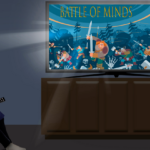When a screen hands you a remote, sometimes quality family time requires you to just thumb your nose. Yes, we realize that cutting off screen time can be a revolutionary act -- and might result in near mutiny on the path to quality family time. But hey, isn't that a sign that it needs to be done? Let’s set aside other compelling reasons for doing so, like Internet … [Read more...] about Quality Family Time Cheat Codes vs. TV, Phones & Games
Screen time
Onscreen Media Violence in the Battle for Children’s Minds
Raising kids in a violent world is difficult. Raising them in a high tech world where virtual violence is pandemic is not only difficult, but increasingly complicated. Just what are parents up against, and what can they do about it? The American Academy of Family Physicians (AAFP) says that a growing body of research shows a strong association between the perpetration of … [Read more...] about Onscreen Media Violence in the Battle for Children’s Minds


